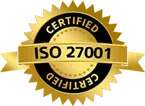Object Counting AI: Detect, Track, and Count Multiple Objects in a Single Image
Published March 26, 2024
In today's technology-driven world, the ability to accurately detect, track, and count multiple objects in a single image is revolutionizing various sectors, from manufacturing and supplychain to security and urban planning. Object counting AI, a sophisticated branch of computer vision and artificial intelligence, is at the forefront of this transformation, offering innovative solutions that streamline operations, enhance accuracy, and provide invaluable insights into complex environments.
Understanding Object Counting AI
Object counting AI combines the power of machine learning algorithms with advanced image processing techniques to identify and enumerate distinct items within digital images and videos. This technology can differentiate between diverse object types, sizes, and shapes, even in crowded or dynamically changing scenes.
Core Components of Object Counting AI
1. Detection: The first step involves identifying individual objects in the image. Using deep learning models, such as convolutional neural networks (CNNs), the AI system can recognize and localize various objects with high precision.
2. Tracking: In sequences or crowded scenes, tracking algorithms maintain the identity of each object as it moves or interacts with other elements, ensuring accurate counting over time and spac
3. Counting: The final step aggregates the detected objects, providing a total count. Advanced AI models can count objects even in dense, overlapping scenes where traditional counting methods fail.
Applications and Impact

Manufacturing
In the manufacturing sector, object counting AI is crucial for ensuring the accuracy of parts and products on assembly lines. It helps in monitoring production rates and verifying that the correct number of components are used in assembly processes. This technology also identifies bottlenecks in production lines and assists in quality control by counting and detecting defects in products. By providing real-time data, it enables manufacturers to make swift adjustments, reducing downtime and enhancing productivity.
Logistics and Supply Chains
In logistics and supply chain management, object counting AI optimizes operations by automating the tracking of goods throughout the distribution process. It can accurately count items as they are loaded and unloaded from delivery vehicles, ensuring that the shipment quantities match the inventory data. This accuracy improves supply chain efficiency, reduces discrepancies, and enhances the traceability of goods. AI-driven object counting also aids in container management, allowing companies to maximize space utilization and streamline packing processes.
Warehouse Management
Warehouses benefit immensely from object counting AI through improved inventory management. The technology allows for the continuous monitoring of stock levels, automatic updating of inventory records, and identification of discrepancies. It facilitates efficient warehouse layout planning by analyzing and counting stored items, optimizing space usage, and improving the accuracy of order fulfillment. In addition, AI-driven systems can enhance safety by monitoring and managing the flow of goods and equipment, reducing the risk of accidents.
Office Spaces
In office environments, object counting AI contributes to resource management and space optimization. It can monitor and analyze the usage of office amenities, such as meeting rooms, workstations, and equipment, providing data-driven insights for better space utilization and planning. Furthermore, in the context of smart buildings, object counting AI can enhance energy efficiency by tracking the occupancy of different areas and adjusting lighting, heating, and cooling systems accordingly.
Retail and Inventory Management
In retail, AI-powered object counting systems can monitor product levels on shelves, providing real-time inventory data and alerting managers when restocking is needed. This technology enhances customer satisfaction by ensuring product availability and aids in optimizing inventory turnover.
Traffic and Crowd Management
Object counting AI excels in analyzing traffic flow and crowd density, vital for urban planning and public safety. It can count vehicles, bicycles, and pedestrians, offering insights into traffic patterns, helping to design better transportation networks, and improving crowd control measures during large events.
Wildlife Conservation and Research
In ecological studies and wildlife management, AI-based object counting enables researchers to estimate animal populations from aerial or trap camera images. This non-invasive method provides accurate data for conservation efforts and ecological balance assessments.
Future Directions
Integration with Other Technologies
The future of object counting AI lies in its integration with other technologies like drones, IoT devices, and augmented reality (AR), enhancing its applicability and efficiency in real-time monitoring and decision-making processes.
Advancements in AI and Machine Learning
Continued advancements in AI and machine learning algorithms will enable more sophisticated object detection and counting capabilities, handling more complex scenes with higher accuracy and speed.
Object counting AI is a technological marvel that has the potential to transform industries by providing efficient, accurate, and reliable methods for detecting, tracking, and counting objects in images. As this technology continues to evolve, its integration into various domains will undoubtedly unlock new possibilities, driving innovation and efficiency across the board. With its expanding range of applications and ongoing enhancements, object counting AI is set to play a pivotal role in shaping the future of digital imaging and analysis.

